National
Trudeau’s Last Stand, Resignation Rumors Swirl as Liberals Face Political Oblivion
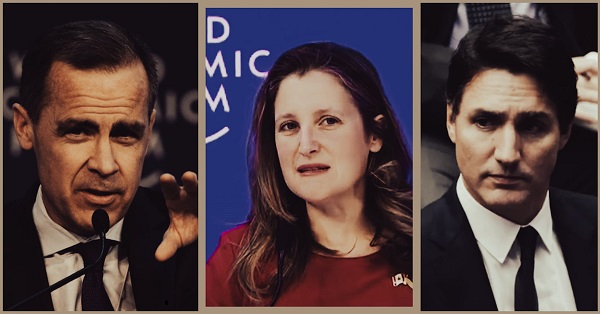
With Polls in Free Fall and a Caucus Revolt Brewing, Analyst believe the Liberals will Bet on Identity Politics to Distract Canadians From Nine Years of Failure
If you haven’t already, crank up Whitesnake’s Here I Go Again, because the Liberal Party is hitting all the same notes in their spectacular fall from grace. Rumors are swirling that today Justin Trudeau, the king of platitudes and bad policies, might finally call it quits after nine long years of setting Canada on fire and calling it progress.
So, why is Trudeau on the verge of resignation? Because he’s facing a caucus revolt. Apparently, some of these MPs weren’t thrilled they didn’t get picked for the very last liberal cabinet shuffle, (or maybe it has to do with the latest Anguis Reid polls) which is funny considering they’ve had years to boot this guy. Instead, they’ve spent their time smiling for photo ops and pretending the country isn’t spiraling into chaos. Now, with the next election practically on the doorstep—2025, people—they’re panicking. And it’s glorious to watch.
Let’s set the stage: the latest Angus Reid poll is catastrophic for the Liberals. They’re sitting at 16%—that’s not just bad, that’s “we’re going to lose half our seats” bad. For context, the NDP is at 21%, which is embarrassing enough, but the Conservatives are at 45%. These are Harper-era numbers, folks. Pierre Poilievre isn’t just winning; he’s running victory laps before the race has even started.
So, what are the Liberals going to do? Well, they have three options. Spoiler alert: they’re all terrible.
Option 1: Prorogue Parliament and Hold a Leadership Race
So here’s the Liberals’ desperate move: prorogue Parliament, delay governing, and launch a leadership race to distract Canadians from their failures. It’s a political circus waiting to happen. Every ambitious Liberal—Freeland, Carney, Champagne—will throw their hat in the ring, and none of them are ready to clean up Trudeau’s mess.
But here’s the kicker: the clock is ticking. The fiscal year ends March 31, and without passing Interim Supply, the government literally shuts down. A leadership race takes months, leaving the party paralyzed while Pierre Poilievre dominates the narrative.
A new leader won’t fix anything; they’ll just inherit a sinking ship and take the blame for the inevitable electoral disaster. This isn’t a solution—it’s a slow, painful march toward oblivion while Canadians demand real leadership.
Option 2: Force a Leader Down Our Throats
Here’s where it gets spicy. The Liberals could skip the drama and appoint a new leader outright—someone like Chrystia Freeland. This would be their Kamala Harris moment. They’d toss Trudeau overboard, slap Freeland on the podium, and scream from the rooftops, “Canada’s First Female Prime Minister!” The media would eat it up. They’d call it historic, groundbreaking, revolutionary.
But here’s the first roadblock: Trudeau doesn’t have to go anywhere unless he decides to. That’s right, folks—there’s no magical “kick him out” button in the Liberal Party rulebook. Even if half his caucus is banging down his office door with pitchforks, Trudeau can just sit back, flash his trademark grin, and say, “I’m still your guy.” It’s less of a democratic process and more of a monarchy with better PR.
Now, let’s assume Trudeau does step down because, let’s face it, his ego might be the only thing keeping him there. Enter Chrystia Freeland. The Liberals would roll her out as the savior of their sinking ship.
But here’s the problem: Freeland’s record is awful. She’s been Trudeau’s loyal sidekick for years, backing every bad policy this government has pushed. From the $65 billion budget blowout to fraudulent COVID loans to the carbon tax disaster, Freeland has her fingerprints all over this mess. She’s not a fresh start; she’s Trudeau 2.0, but with less charisma.
And let’s be real, the Liberals wouldn’t run on their record because their record is a disaster. Instead, they’ll double down on identity politics. Freeland will be the face of the campaign, and the talking points will be predictable: “Conservatives hate women. Conservatives will ban abortion. Conservatives are scary.” It’s the same broken record we’ve heard a million times before. It didn’t work in the U.S., and it’s not going to work here. Canadians are smarter than that.
Option 3: Let Trudeau Go Down with the Ship
Now, this might actually be the smartest move. Trudeau built this disaster. He deserves to be the face of the loss. Let him captain the ship straight into the abyss, take the hit in the next election, and then rebuild from the ashes. It’s not pretty, but it’s probably the cleanest way to salvage the Liberal brand long-term.
But we all know the Liberals won’t do this. They’re too arrogant, too desperate, and too addicted to their own spin. Instead, they’ll probably shove Freeland into the spotlight either through a leadership race or just by bypassing the vote and just giving her the reigns and let her ride the Titanic into electoral oblivion, and then act surprised when it all goes horribly wrong.
Trudeau’s Titanic, Freeland’s Fantasy, and the Liberal Pipe Dream
So, here’s what I expect to happen, and honestly? Good riddance to Trudeau. Nine years of turning this country into a woke, bloated, over-taxed shell of what it used to be—his time is up. But let’s be real, the Liberals’ ship hit the iceberg years ago. Now they’re panicking because it’s finally sinking, and they’re trying to figure out who’s going to be the face of the wreckage. Spoiler alert: none of their options are good.
Here’s their play: they’re going to pull the Kamala Harris switcheroo. Replace Trudeau with Chrystia Freeland, slap a big, shiny label on her as Canada’s “First Female Prime Minister,” and hope nobody notices she was the co-pilot of this crash. Freeland has been positioning herself for this moment for years. She’s stood right next to Trudeau, smiling, nodding, and championing the very policies that have made Canadians poorer, angrier, and ready to vote Conservative in record numbers.
But here’s what they don’t want you to know—and here’s what they won’t campaign on: the Liberal record. Why? Because it’s abysmal. Corruption? Check. They handed out COVID loans like Halloween candy, with billions lost to fraud. Deficits? Oh, just a casual $65 billion for 2024. Inflation? A raging fire that’s destroying Canadians’ savings and quality of life. Authoritarian measures? Let’s not forget freezing bank accounts during the Freedom Convoy protests. Big government? That’s not just their record; it’s their entire identity.
And with Freeland at the helm, that’s not going to change. What’s the plan? Double down on identity politics, of course. “Chrystia Freeland: Canada’s First Female Prime Minister.” That’ll be the headline. That’ll be the news cycle. And anyone who questions her? Sexist. Misogynist. Anti-woman. Oh, and here’s the cherry on top: they’ll pivot straight to abortion rights. Why? Because they think it’s the one play that still works. Ignore the economy. Ignore the housing crisis. Ignore the fact that Canadians are literally rationing food. Just scream, “The Conservatives hate women!” and hope it sticks.
If I were a Liberal strategist—and thank God I’m not—I’d tell them to shove Freeland down our throats now. Why? Because the leader of the Titanic isn’t making it out alive. Whoever takes over the Liberal Party right now is going down with the ship, no question about it. Freeland appeals to the Liberal base: the blue-haired Twitter warriors, the downtown elites, the latte liberals. That’s her crowd. But here’s the problem: that’s it. She’s not reaching the working-class Canadians who are sick of paying for Liberal failures. Hillary Clinton has more likability than Freeland, and that’s saying something.
So, yes, they’ll run her on abortion rights, paint the Conservatives as the boogeyman, and pretend Canadians don’t notice they’ve been absolutely terrible for nine years. But let’s be honest—this is a political kamikaze mission for Freeland. The election results in 2025 are going to be catastrophic for the Liberals. And once the dust settles, Freeland is finished. She’ll be the face of the defeat, the one who led the party into the abyss.
And that’s why the real Liberal leadership race starts after the election. Mark Carney, the former Bank of Canada governor, is waiting in the wings. He’s smart enough to know the Liberals need to burn to the ground first before they can rebuild. He’s the only one who can go toe-to-toe with Pierre Poilievre on fiscal policy. If the Liberals want to have a shot at relevance in 10 years, Carney’s their guy. Pair him with someone like Christy Clark as deputy liberal opposition leader, and maybe—maybe—they can reforge the Liberal brand.
But Trudeau? He should go down with the ship. He built this disaster. He’s the reason the Liberals are at 16% in the polls while the Conservatives are at 45%. Let him take the fall. Let the party burn, and let the next generation of upstarts fight over the ashes. Freeland can have her moment, her delusion that she can fix this, but she’s only walking into political oblivion.
So here’s my advice to the Liberals: pour the champagne, play the violin, and let Justin Trudeau captain his sinking ship. And hey, as the ship goes down, maybe Trudeau can declare himself a transgender woman to grab the first spot on the lifeboat—because nothing says progressive hero like skipping the line while the rest of the crew drowns in his mess.
Censorship Industrial Complex
Freedom of speech under threat on university campuses in Canada

From the Fraser Institute
By Michael Zwaagstra and Matthew D. Mitchell
Obviously, when students feel that their grades are at risk, they will be far less likely to express their genuine opinions or even ask questions during class discussions. Not only does this make classes less interesting, it also undermines the entire purpose of a university education.
Universities should be places where all ideas are welcomed and explored. In many Canadian university classrooms, however, only the “correct” viewpoint is heard.
According to a new survey (conducted by Leger and published by the Fraser Institute) of 1,200 Canadian university students and recent graduates, politically left-of-centre students were far more likely than their right-of-centre classmates to report that their views were welcomed and encouraged in class.
For example, 83 per cent of right-leaning students believe that professors advocate a left-of-centre view—and 45 per cent of left-leaning students agree with them.
Forty-two per cent of right-leaning students say they experienced a university classroom environment that limited discussion and questions on controversial topics to only one side of the argument. In contrast, only 29 per cent of left-leaning students felt the same way.
To make matters worse, 50 per cent of right-leaning students said they sometimes felt uncomfortable expressing their opinions due to the views of the professors leading the class. Only 36 per cent of left-leaning students reported the same experience.
Interestingly, when asked whether there was a “safe” point of view on controversial topics in university classes, a majority from both groups answered “yes” with little difference between right-leaning students (58 per cent) and left-leaning students (51 per cent).
A significant number of right-leaning students (37 per cent) also said they feared formal consequences for expressing honest thoughts, opinions or even asking questions in their classes. Among right-leaning students who expressed this concern, 74 per cent feared their professors would lower their grades for expressing the “wrong” opinion in class.
Obviously, when students feel that their grades are at risk, they will be far less likely to express their genuine opinions or even ask questions during class discussions. Not only does this make classes less interesting, it also undermines the entire purpose of a university education.
Other studies also reveal the politically one-sided nature of university campuses. For example, a 2022 survey published by the Macdonald-Laurier Institute found that 88 per cent of Canadian university professors vote for parties of the left and only 9 per cent support parties on the right. No wonder students feel their class discussions are consistently one-sided.
Similarly, a 2024 survey published by Heterodox Academy and College Plus found that more than half of students were reluctant to discuss certain issues such as the current Israel/Hamas conflict and transgender identity, and nearly half were reluctant to even broach the subject of politics. More alarmingly, a majority of students favoured limiting free expression on campus.
While many university professors are quick to describe themselves as strong supporters of diversity, this does not seem to include diversity of thought. A truly diverse campus would welcome a variety of intellectual perspectives in the spirit of open and scholarly debate. A campus where everyone looks different but thinks the same is not meaningfully diverse. As economist and philosopher John Stuart Mill argued many years ago, we are all impoverished when we silence one perspective.
It’s concerning that most students feel there’s a “safe” political view on controversial topics, particularly when students who hold a minority viewpoint feel the least safe expressing their views.
Of course, things won’t change overnight. But the first step to dealing with a problem is to admit that you have one. In that light, university administrators, professors and politicians should acknowledge that the current lack of viewpoint diversity on campus is a serious problem for all Canadians. Democracies function best when people freely express, and vigorously debate, competing ideas. As institutions of higher learning, universities should exemplify what free and open discussion looks like.
While there’s nothing wrong with professors holding political views and sharing those views with their students, they should not restrict free and open debate in their classrooms. This means ensuring that all students, including those whose opinions are in the minority, are guaranteed the right to share their views without fear of reprisal.

Matthew D. Mitchell
Energy
Canada’s LNG breakthrough must be just the beginning
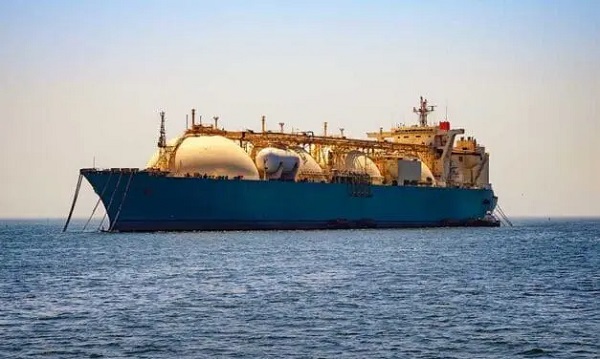
This article supplied by Troy Media.
 By Lisa Baiton
By Lisa Baiton
Without decisive action, Canada risks missing out on a generational opportunity
For decades, Canada has relied almost exclusively on the United States to buy our natural gas exports. We are one of the world’s top natural gas exporters, selling nearly half of our total natural gas production each year, but about 99 percent of those exports go to a single customer south of
our border.
This trading relationship has been reliable, even though it has meant selling our natural gas at a lower price. But things are changing.
A good business has more than one customer, and over the past decade our biggest customer has become the largest Liquefied Natural Gas (LNG) exporter on the planet.
But Canada has taken a major step forward. LNG Canada’s first shipment to international markets marks a historic breakthrough—it’s the country’s largest private investment and puts Canada on the map as a global supplier of LNG.
This achievement deserves celebration. It demonstrates that Canada can build and deliver major energy infrastructure, unlocking economic opportunities for Indigenous Nations, British Columbians, and Canadians across the country. Just as the TransMountain pipeline expansion diversified our global customer base boosted our GDP, and enabled production growth, LNG exports can do for our natural gas sector. Natural gas royalties from LNG Canada alone are projected to contribute $23 billion to British Columbia’s government over its 40-year lifespan. Building a facility of similar scale to LNG Canada is estimated to create over 35,000 jobs during construction and add up to $4.5 billion to our national GDP annually. It’s a glimpse of what’s possible.
But we can’t stop here.
Without decisive action to scale up LNG, Canada risks missing out on a generational opportunity to secure economic sovereignty and meet rising global energy demand.
Global demand for LNG is surging. Shell forecasts a 60 per cent increase by 2040, driven by Asian economic growth, the decarbonization of heavy industry and transport, and new energy demands from artificial intelligence. Most G7 leaders have called for a full ban on Russian energy imports, and countries around the world are actively seeking secure, stable suppliers. Canada, as the fourth-largest oil producer and fifth-largest natural gas producer, is well-positioned to help fill that gap.
So why haven’t we? Despite our resource wealth, Canada lags on infrastructure and policy. While others sprint for global contracts, we’re stuck in red tape. Our permitting system is slow, uncertain, and hostile to investment. That must change.
The government’s two-year approval target is a step forward, as is the recent work our Prime Minister and Energy Minister Hodgson are doing to promote energy trade in Poland and Germany, including LNG. But deeper reforms are needed to create a clear, competitive, investor-friendly system that accelerates development.
We must also prioritize infrastructure investment. With strategic investments in pipelines, LNG terminals, and port capacity, we can connect our vast natural gas reserves to highdemand markets across Asia, Europe, and beyond.
Equally crucial is diversification. The U.S. will remain a vital customer, but relying on one market is no longer tenable. Japan, Europe, and emerging Asian economies are actively seeking partners—and Canada must be ready to meet them with reliable supplies and long-term contracts.
Indigenous participation will be key to success. Canada’s emerging LNG export industry is demonstrating what’s possible with the Haisla Nation’s Cedar LNG, the world’s first Indigenous majority-owned LNG project, along with Woodfibre LNG being advanced in partnership with the Squamish Nation, and Ksi Lisims LNG being co-developed with the Nisga’a Nation. Expanding the LNG sector offers an opportunity to advance reconciliation meaningfully, through ownership, jobs, and long-term prosperity.
This is a pivotal moment. The first phase of LNG Canada must be just the start. The world needs our energy. It’s time to deliver.
Lisa Baiton is the president and CEO of the Canadian Association of Petroleum Producers
Troy Media empowers Canadian community news outlets by providing independent, insightful analysis and commentary. Our mission is to support local media in helping Canadians stay informed and engaged by delivering reliable content that strengthens community connections and deepens understanding across the country.
-

 Censorship Industrial Complex43 mins ago
Censorship Industrial Complex43 mins agoFreedom of speech under threat on university campuses in Canada
-

 Business43 mins ago
Business43 mins agoCarney engaging in Orwellian doublethink with federal budget rhetoric
-

 Energy43 mins ago
Energy43 mins agoCanada’s LNG breakthrough must be just the beginning
-
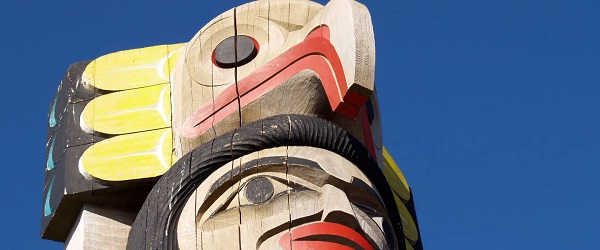
 Business2 hours ago
Business2 hours agoCourt’s ‘Aboriginal title’ ruling further damages B.C.’s investment climate
-

 Alberta2 days ago
Alberta2 days agoAlberta deserves a police force that actually reflects its values
-
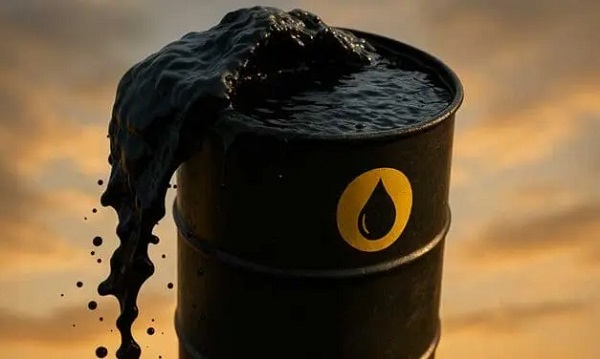
 Alberta2 days ago
Alberta2 days agoOPEC+ chooses market share over stability, and Canada will pay
-
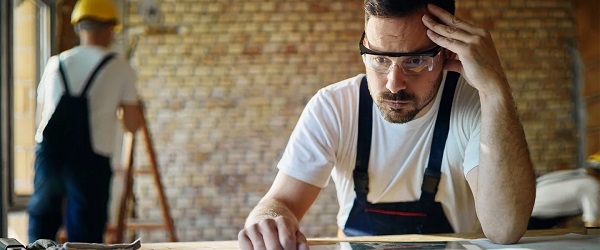
 Alberta2 days ago
Alberta2 days agoProvincial pension plan could boost retirement savings for Albertans
-
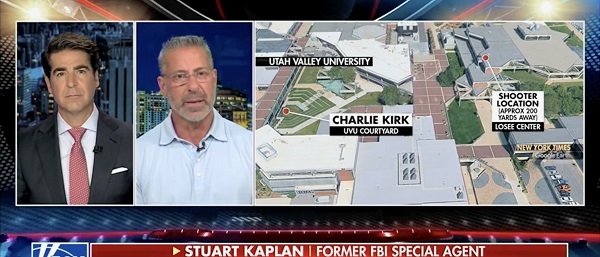
 Crime2 days ago
Crime2 days agoFormer FBI Agent Says Charlie Kirk Assassination May Have Been ‘A Professional Hit’








